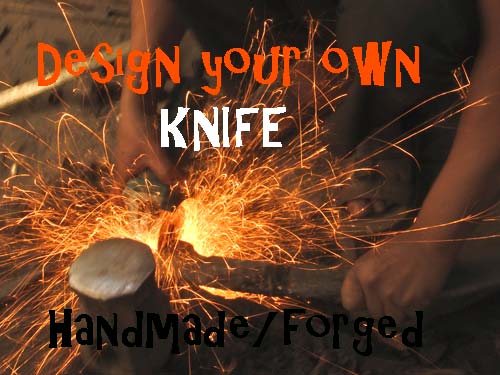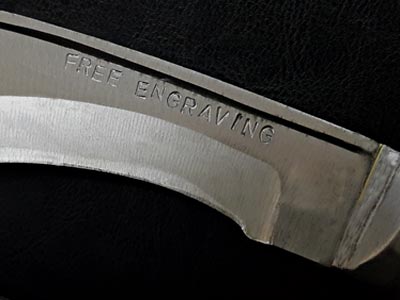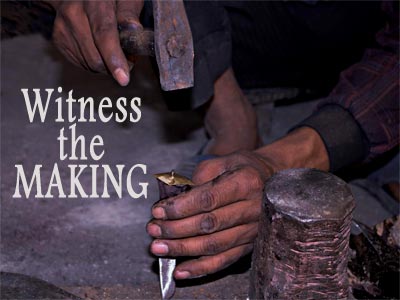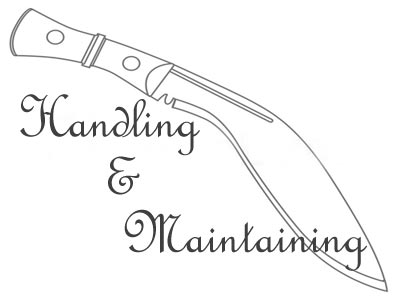Repair & Maintenance
Know how to repair/maintain a khukuri/kukri knife properly
keep your 'kukri' knife sharp and shiny like you...
Khukuri is a tool and a weapon that serves your at utmost when taken care of it completely. It's a perfect companion on your work, good and bad times. Since it's you need to use it, you need to maintain it, and repair it in case of damage. Periodically you must take care of the blade, sheath, and the handle; make sure the kukri is not left behind or discarded for a long time just because you got no need of it. Even after you use it the kukri may get dirty from dust, stains, and gums. You need to clean the blade hand handle properly if you want to kukri to last for long. In priority, the blade must be taken care of at most. Here are the few tips and tricks provided by the makers and knife experts. Do follow them strictly.
Maintaining your Kukri? Overall Maintenance Tips.
Avoid Rust from blade (oiling): It is important to take care of your blade. We should apply oil (machine oil or gun oil) after every use. If not in use we recommend to oil the blade at least once a month. Please avoid fingerprints on the blade. Sometimes there is a chance of rust developing on the blade if there is rust we should first clean the blade with petrol or any type of gasoline and again rub the rust with fine sandpaper. It should be cleaned and dried with a clean cloth. Thereafter, oiling can be done.
If there is a dragon carved in the blade, soak the hard toothbrush in the petrol and scrub the dragon area, then wipe it off with a clean cloth. It is also important to clean the sheath and or handle once in a while. You can use a furniture shiner for brushing off the wood and shoe polish for the sheath. For the brass fittings if any brass polish can be used and silver polish for silver cases. If there is a need to keep the kukri for a longer period of time oil the blade properly and wrap it in a polythene bag and keep it out of the scabbard. A sharpening stone is recommended for sharpening the blade though blunt chakmak can do the work. It is important to maintain a room in dry normal temp to avoid faults in Khukuri.
Khukuri sheath should not be exposed to the sun for a longer period of time as heating may shrink the leather making it difficult for the blade to insert. The steel used are industrial steel but the blade should not be used in hard metallic surface and stones. Keep away from water and fingerprint. Maintaining a khukri can prolong its life. Please see that guidance is necessary before use and it is to be kept away from the children.
What if the scabbard is too Tight or Loose?
The scabbard of almost all kukris are made of buffalo hide, it is sensitive to weather conditions. It can shrink in hot and humid temperature while expands a bit in cold temperature.
If the weather condition is hot and humid the sheath can become tight, making the leather shrink that gives the extra pressure wooden frame resulting into drawing in and out difficult. To prevent this difficulty we should oil the blade sufficiently and then push the blade forcefully if needed. To fit in the blade inside hit the front edge of the sheath and the back edge several times. We should then draw the blade in and out several times and repeat the hitting action.
If the temperature is too cold than it helps in leather expansion, it widens inside making the sheath loose. This is quite rare but still to avoid this, keep the sheath in the sun for a few hours to dry. The sun will heat the leather and contracts narrowing the khukuri room. It is also recommended to stick a piece of leather from inside the upper surface of the wooden frame to tighten the blade in the scabbard. Ensure to keep the blade and sheath separate when not in use.
Using the small knives (Karda & Chakmak)
Karda and Chakmak dates back from ancient times maybe from the time when Khukuri was born. These are the two small knives found in most of the kukris having their own requirement. The small knife with a sharp edge is called "kadra" used as paper knife while the "chakmak" the other small knife works as a sharpener. Traditionally, chakmak was also used to ignite fire by generating sparks by striking against selective stones found in the hilly regions. It is equally important to maintain these knives. They should be oiled, kept away from water and maintain as how we do our bigger Khukuri blades.
Sharpening a blade by a file
It is important to know how to sharpen a blade correctly and cautiously. Filing the blade forcefully in a steep angle will give quicker results but it may ruin the blade if we overdo. We should hold the kukri firmly against a fix object facing the edge towards you, take a smooth file and hold in an angular position to the edge. File with a to and fro motion from the notch towards the tip until sharpen and flip the blade to the other side to repeat the same process.
Khukuri TIP imp info >>
The tip of a khukuri is pointed and sharp but thin at the same time. It can be used for stabbing but this isn’t risk free. Since there is very little mass there is a chance it might bend or break. Therefore care should be taken when handling the tip. After stabbing into any hard object, take out the knife gently by moving the knife up and down with alignment with the panel/body of the blade and NOT left or right. The tip will not be able to handle the pressure if done the opposite way and hence can bend or break. This is why makers slightly soften the tip to avoid breakage but support bend as this can be mended easily. This is a very common practice in Khukuri Making.
Repair Your Kukri (You can do at your own)
How to repair a Bent Tip?
The tip of the blade is less hardened (tempered) to facilitate the making process (to avoid chipping off when fixing butt cap in a straight down position) hence it could bend/twist slightly when struck hard. This is normal and done intentionally. Also, most of the kukris are shipped fresh, to protect it from rusting the blade is packed separately and shipped. The blade may pierce a hole in the packing and may get bent during the transport.
We can easily repair if the tip gets bent. We have to work with a smooth/med grit file. Hold the kukri firmly in an angular position facing its edge towards the body. Start scrubbing by the file to and fro the bent area until it comes in level with the edge. Use more force if required at the stiff bent. Flip the blade and repeat the same process.
How to Remove Rust and bring back that Finishing in your kukri blade? EASY Home Remedy (do on your OWN)...
- Scrub the rust with hard grit sandpaper (60 grit). Scrub the blade in a rhythmic horizontal way and only in one direction (left to right to left).
- After you see the rust is removed partially use medium (100) grit sandpaper and follow the same steps as of point 1;
- Continue the process same way with more softer (120 grit) sandpaper. This will help to keep the finishing of the blade and remove the outer layer of rust.
- After you are done with removing all rust thoroughly wipe the blade and clean with gasoline (petrol).
- Clean the gasoline/petrol on the blade with dishwasher scrub; do it gently and the same way.
- Wipe and clean the blade, and let the gasoline on the blade dry for some time.
- Apply toothpaste and spread all over the blade. Let it dry for sometime
- Use a hard cloth like jeans followed by a clean soft cloth. scrub/wipe the blade as hard as you can
- The blade will come to a decent finishing.
- Now heavily oil the blade by any motor or gun oil.
Unsheathing your kukri
Kukri is a curve knife hence drawing IN and OUT can be difficult sometimes until you know the right way. Also, you should never encircle the sheath by your holding hand. This may cause injury (cut) should the sharp edge is to come out of the sheath.
THE RIGHT WAY >> OFF-belt and ON-Belt positions (same for both)
Slide in by pressing the spine against the inner wall of the sheath and slowly tuck in. As you are tucking in, make sure that the spine is always touching the inner wall of the sheath so that the tip remains away from the inner wood as it goes in.
It is important to be alert while unsheathing your kukri as it may hurt you sometimes. We should always keep the kukri away from the body, arms stretched out and keeping the sharp edge of the kukri towards the opposite side of your hands. Make sure that you do not enfold the sheath with your fingers while drawing out the khukuri. There is a small gap in between the wooden frames and is wrapped by a leather if the sharp edge cuts off the gap in between it may struck the fingers or the palm. It is better if the blade’s spine touches the inner back edge of the scabbard while drawing out and is the same with inserting the blade.

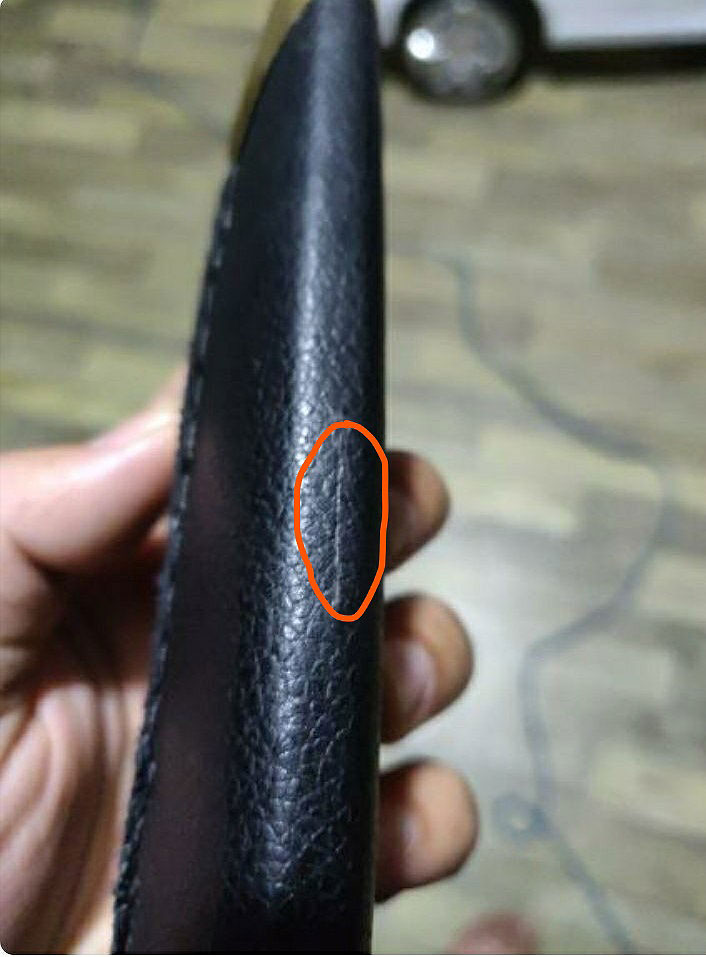
Polishing/ taking care of the Wooden Stand >>
The display stands are handmade by skilled craftsmen and are made out of treated wood called Ashna, known in Nepal as “Seesau”. Since the craftsmen work round the clock to give a quality finishing, it would be important to maintain it for its long-lasting use. The wood can expand and shrink like leather when exposed to strong weather conditions hence it is recommended not to expose the stand outside in hot sun or freezing winter cold. Since the stand is already polished to bring shine, it would be wise to apply polishing after few years of buying for better shine and to keep it looking new. Always use a dry clean cloth to clean away dust.
Is your Kukri greasy and looking dull?
How to clean polish & shine your Khukuri Scabbard/ Sheath at home in a domestic way?
Broken or cracks in Kukri Handle?
Useful Links
Best Sellers
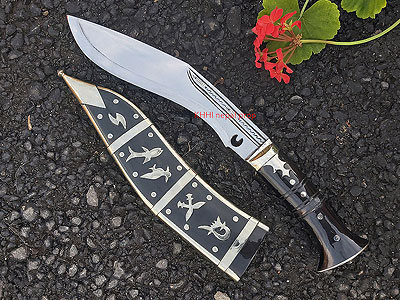
Nepal Dhankute Horn Khukuri (Ornate)
US $ 105.00
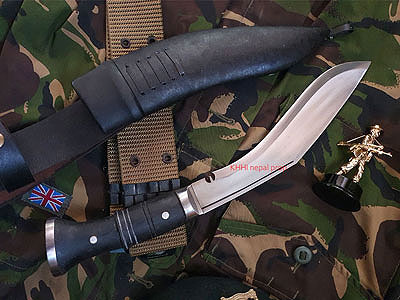
Service Panawal (PRO)
US $ 79.00
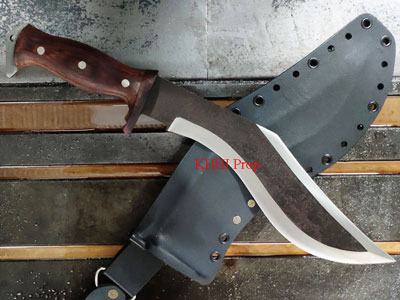
Chukuri Knife
US $ 125.00
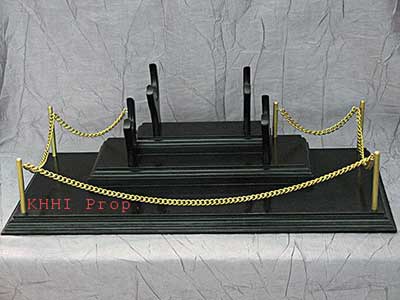
Exclusive Kukri Display Stand (Royal)
US $ 32.00

